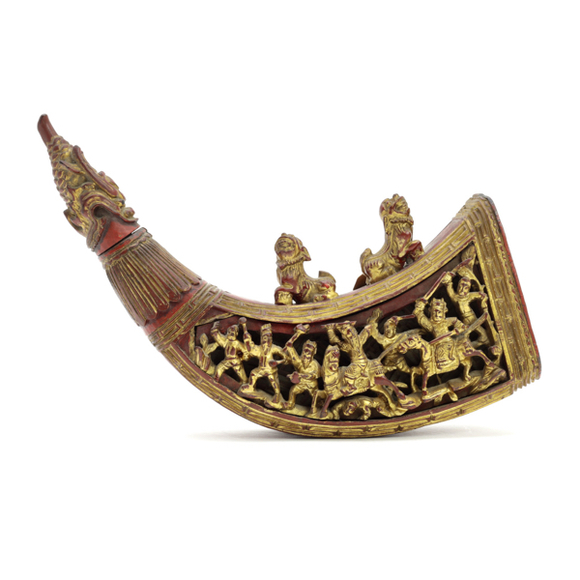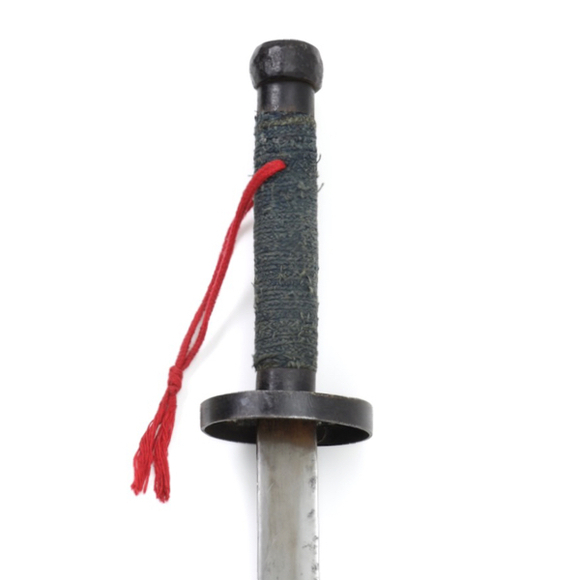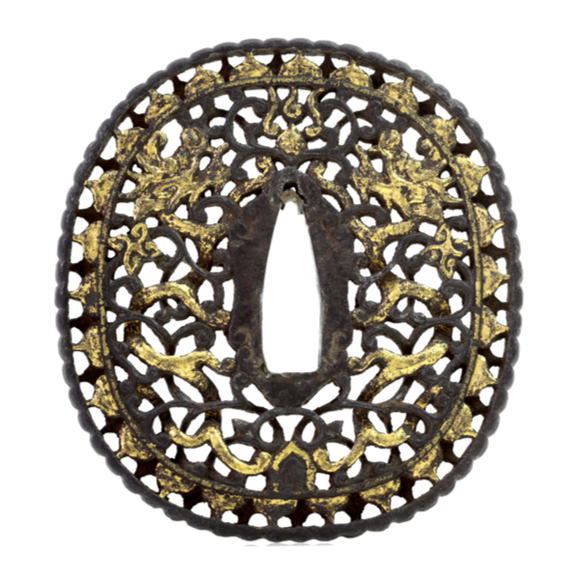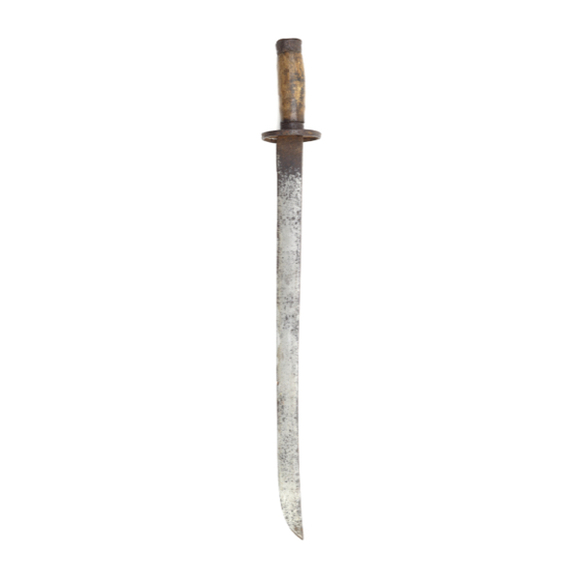With a golden damascened lock of the Indo-Portuguese type.

34 x 19.8 x 3.2 cm
(without pockets)
901 grams
Wood, leather, brass, enamel
Beijing
Qing dynasty, China
Late 18th to first half 19th century
Peter Finer Ltd., London
Introduction
The xièzhì ((獬豸) is a mythical creature with often a goat-like body, lion-like manes, and a single horn on its head. The feet can have paws or hooves, and while usually depicted with fur, they can have scales as well.
In many ways, it resembles the qílín (麒麟), the emblem of the highest military rank, with the main difference that the qílín is customarily depicted with two horns on official rank badges.

A rare xièzhì rank badge of the late Ming.
Sold at Christie's Hong Kong, May 29, 2013, lot 2149.
Xièzhì were a symbol of justice. According to myth, xièzhì were highly intelligent creatures that were able to distinguish right from wrong. They would recognize corrupt officials, stomp them with their horn and devour them.
Appropriately, xièzhì appeared on the rank badges on the coats of censors during official assemblies.1
Notes
1. Pu Jiang et al.; Huangchao Liqi Tushi (皇朝禮器圖式), or "Illustrated Regulations on the Ceremonial Paraphernalia of the Dynasty", chapter 5. 1766 woodblock edition. The manuscript color folios dating from 1759 is now in the Victoria & Albert Museum, accession number E.1756-1953.

Qing imperial censor robe from a 1759 manuscript.
Victoria & Albert Museum, accession number E.1756-1953.
The Censorate
The Qing censorate was tasked with supervising the work of civil and military officials. Their agents were called yùshǐ (御史) or "censors." Also known colloquially as ěrmù guān (耳目宮) or "eyes and ears official" as they served as the emperor's eyes and ears.
They were very powerful and rightfully feared. There was even a branch that was tasked with scrutinizing the emperor himself, making sure he kept to his duties. Most censorate positions during the Qing were divided among two people, a Manchu and a Chinese censor.1
Notes
1. H.S. Brunnet & V.V. Hagelstrom; Present Day Political Organization of China. Fuzhou, 1911. Pages 75-79.
A rare Qing imperial quiver with xièzhì mounts
This general type of quiver was part of the standard equipment of Bannermen in the Qing's capital, Beijing. It emerged during the late Qianlong period and saw use through roughly the first half of the 19th century. Characteristic of the type are the cross-straps which were inspired by older Tibetan and Mongolian models.
This quiver is made with dark brown leather nailed onto a wooden frame. On the back are not the usual three pockets, but one additional one making a total of four pockets. The contents of such quivers were strictly regulated, and it seems that the censor when carrying a quiver, was required to wear one extra special arrow.
Very unusual is the use of brass mounts with vivid blue enamel. Most of the mounts are decorated with stylized kuí (夔) dragons, a common motif at the time that was inspired by the archaic bronzes that were popular collectibles among the Qing upper classes. Four bats adorn the cross straps, each a pun for fú (福), "luck".

Another unusual element is the decoration of the bottom panel, with three V-shaped elements that appear as three dots connected with two lines. This is a typical Chinese way of depicting constellations, which I think these represent. Counting the stars, including the roundel in the center, one comes to 13; The number of stars combined in the Big Dipper and South Douliou Star, the latter a Chinese constellation of six stars seen in the constellation we call Saggitarius. Both were significant constellations in Daoist thought.

Condition
In pretty good condition. One small repair to one of the cross-straps, lower left. Some wear and tear here and there, and some losses to the pockets. See photos.
Conclusion
An extremely rare Qing imperial quiver with enameled mounts and xièzhì decoration.
In studying Qing archery for about 20 years now, this is the first such quiver I've seen. I had never thought of the censors as archers. But then again, all Manchus were all encouraged to uphold their archery tradition. Especially those in positions high at court were expected to serve as an example for the lower ranks.
An exciting find.
















Probably of Southern origin, with a straight blade and flaring tip.
In the style of northern work of the 16th and 17th centuries
A simple utilitarian weapon, probably made for rural martial artists or militia.
A standard pattern Qing military saber, but with the rare addition of a label in Manchu.






